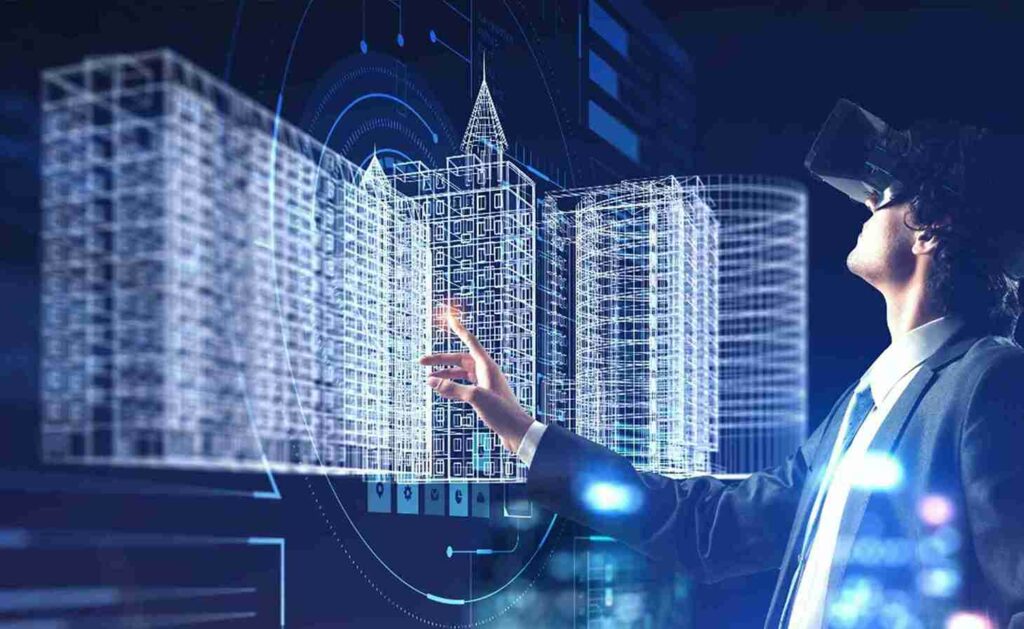Using Virtual Reality in Project Planning and Execution

Introduction
The integration of virtual reality (VR) into project planning and execution represents a cutting-edge advancement in the field of project management. VR technology offers immersive experiences that can transform the way project teams visualize, design, and manage complex projects. By simulating real-world environments, VR enables project managers to foresee potential challenges, improve communication among stakeholders, and enhance overall project outcomes.
The Benefits of Virtual Reality in Project Planning
Enhanced Visualization and Design
One of the most significant advantages of using VR in project planning is the ability to create detailed, three-dimensional visualizations of project designs. This immersive experience allows stakeholders to explore and interact with project models in ways that traditional two-dimensional plans cannot match. For instance, architects can use VR to walk through a building’s design, making it easier to identify potential issues before construction begins. This level of detail helps ensure that the final product meets the project’s specifications and quality standards.
Improved Communication and Collaboration
Effective communication and collaboration are critical to the success of any project. VR technology facilitates these aspects by providing a shared virtual environment where team members can meet and discuss project details in real-time, regardless of their physical location. This capability is particularly beneficial for remote teams, as it eliminates the barriers posed by geographical distances. By fostering a more interactive and engaging platform for communication, VR helps ensure that everyone involved in the project is on the same page.
Implementing VR in Project Execution
Streamlined Construction Processes
In the execution phase of a project, VR can play a crucial role in streamlining construction processes. By visualizing the construction site in VR, project managers can identify and address potential logistical issues before they become problems. This proactive approach helps prevent costly delays and ensures that the project stays on schedule. Additionally, VR can be used to train construction workers by simulating potential hazards and demonstrating best practices, thereby improving safety and efficiency on the job site.
Real-Time Progress Monitoring
Monitoring the progress of a project in real-time is essential for ensuring that it remains on track. VR technology enables project managers to create virtual replicas of the construction site, which can be updated regularly to reflect the current state of the project. This dynamic model allows managers to compare the planned progress with actual progress, identify discrepancies, and take corrective actions as needed. Real-time progress monitoring through VR provides an accurate and comprehensive overview of the project’s status, facilitating better decision-making.
Virtual Reality in Risk Management
Identifying and Mitigating Risks
Risk management is a critical component of successful project management. VR technology enhances this process by providing a platform to simulate various scenarios and identify potential risks. For example, project managers can use VR to model the impact of different risk factors, such as weather conditions or supply chain disruptions. By visualizing these scenarios, teams can develop more effective mitigation strategies and contingency plans. This proactive approach to risk management helps ensure that projects can navigate unforeseen challenges and achieve their objectives.
Improving Safety Protocols
Safety is a paramount concern in project execution, and VR can significantly contribute to improving safety protocols. By simulating different construction scenarios, VR allows project managers to identify potential safety hazards and develop strategies to mitigate them. For instance, VR can be used to train workers on how to handle dangerous equipment, navigate complex worksites, and respond to emergencies. This immersive training experience helps ensure that all team members are well-prepared to handle real-world safety challenges, reducing the likelihood of accidents and injuries.
The Future of Project Management with Virtual Reality
Advancements in VR Technology
As VR technology continues to advance, its applications in project management are expected to expand. Future developments may include more sophisticated VR models that provide even greater levels of detail and interactivity. These advancements will enable project managers to create more accurate simulations, enhancing the planning and execution processes. Additionally, the integration of VR with other emerging technologies, such as artificial intelligence (AI) and the Internet of Things (IoT), will further revolutionize project management practices.
Adoption of VR in Various Industries
The adoption of VR in project management is not limited to a single industry. Sectors such as construction, healthcare, manufacturing, and education are increasingly recognizing the benefits of VR technology. For example, in healthcare, VR can be used to design and plan new medical facilities, train medical personnel, and simulate surgical procedures. In manufacturing, VR can streamline product design and optimize production processes. This cross-industry adoption demonstrates the versatility and potential of VR in transforming project management across different fields.
Integrating VR with Project Management Education
Enhancing Learning Experiences
As VR technology becomes more prevalent in project management, educational institutions are incorporating it into their curricula to provide students with hands-on learning experiences. Programs that offer the best online MBA with project management are increasingly integrating VR simulations into their coursework. This approach allows students to practice project planning and execution in a virtual environment, helping them develop the skills needed to succeed in the real world. By bridging the gap between theory and practice, VR-enhanced education prepares future project managers to navigate complex project landscapes effectively.
Preparing for Real-World Challenges
The use of VR in project management education goes beyond enhancing learning experiences—it also prepares students for real-world challenges. By exposing students to realistic project scenarios, VR training helps them develop critical thinking, problem-solving, and decision-making skills. For instance, students can use VR to simulate project planning sessions, identify scope management issues, and develop strategies to address them, as discussed in this video. This comprehensive training ensures that graduates are well-equipped to handle the complexities of modern project management.
Conclusion
The integration of virtual reality into project planning and execution is transforming the field of project management. By enhancing visualization, improving communication, streamlining construction processes, and facilitating real-time progress monitoring, VR offers significant benefits that can lead to better project outcomes. Furthermore, VR’s applications in risk management and safety protocols help mitigate potential challenges and ensure projects are completed safely and efficiently. As VR technology continues to advance and its adoption spreads across various industries, the future of project management looks promising. Educational institutions are also embracing VR, preparing the next generation of project managers to leverage this technology for success. For those pursuing the best online MBA with project management, integrating VR into their studies will be crucial for staying ahead in this rapidly evolving field. Incorporating VR into project management practices not only enhances current projects but also sets the stage for innovative and efficient future projects.
Read another article ”How to Manage Financial Stress as a University Student”

 How to Find the Best Tutor in Los Angeles?
How to Find the Best Tutor in Los Angeles?  How You Get into the Canada’s Largest Engineering School
How You Get into the Canada’s Largest Engineering School  Explore the Top 10 Reasons Why to Study in the abroad!
Explore the Top 10 Reasons Why to Study in the abroad!  The Best Time to Book a Short Stay Apartment in Dubai
The Best Time to Book a Short Stay Apartment in Dubai  Maximize Your Potential With A CDL Truck Driving School
Maximize Your Potential With A CDL Truck Driving School  How students can book accommodation in York House Nottingham?
How students can book accommodation in York House Nottingham?  Exploring London’s Best Butcher Shops
Exploring London’s Best Butcher Shops  Enhance Your Shop Appeal with Sydney’s Best Carpentry Services
Enhance Your Shop Appeal with Sydney’s Best Carpentry Services  A Detailed Look at the Features of the LEGO Technic Mars Crew Exploration Rover
A Detailed Look at the Features of the LEGO Technic Mars Crew Exploration Rover